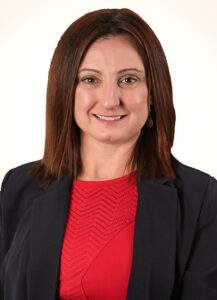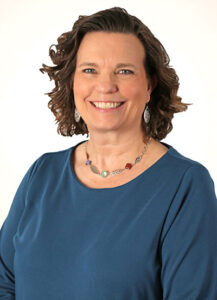Article originally published by Kiplinger.com.
Written by Chris Wilbratte
 “Life expectancy is longer today. Interest rates are low, and inflation is creeping back up. Taxes will likely increase in the next few years. Will the stock market continue its steady climb? You can hope, but who knows? Volatility could be part of that long-term equation.
“Life expectancy is longer today. Interest rates are low, and inflation is creeping back up. Taxes will likely increase in the next few years. Will the stock market continue its steady climb? You can hope, but who knows? Volatility could be part of that long-term equation.
All of these factors create financial uncertainty in the future and make planning for retirement more complex. With that in mind, here are five key components of preparing for retirement:
1. Get an income plan
How much money do you need, and where will it come from?
Those are two very important questions. As you enter your prime earning years, it’s important to think ahead about how much income you will need in retirement. Then invest accordingly.
When you are working, investing is fairly straightforward. All your money has to do is grow. When you retire, your money has to provide income, pay taxes, and grow in order to support your lifestyle. Investing becomes much more nuanced and even more challenging once you start taking income.
As you near retirement, here are a few steps to get you started on an income plan:
- List all your guaranteed sources of retirement income — Social Security, pension, an annuity with a guaranteed minimum amount, etc.
- List retirement savings and investment accounts, such as a traditional IRA, 401(k), Roth IRA or Roth 401(k).
- Ask yourself whether your projected income will cover your expenses and the kind of lifestyle you desire. Remember, a common rule of thumb is that in retirement, most people need to replace roughly 60% to 80% of their pretax, pre-retirement income in order to maintain their lifestyle.
2. Maximize your Social Security income
To maximize Social Security benefits for you and your spouse, you need to know which of the estimated 567 separate claiming strategies for married couples is right for you. Sometimes, it makes sense to start taking Social Security while letting your nest egg grow. For others, it makes sense to draw down on investments to let your Social Security benefits continue to grow until full retirement age (usually around 67) or to when the benefit amount peaks (age 70) before claiming the benefits.
An important note: If you and your spouse were born on Jan. 1, 1954, or earlier and have both reached full retirement age, you can claim spousal benefits and let your own benefits keep growing. At age 70, you can switch to the higher benefit. The strategy is an option called “restricted filing,” and it isn’t available for those born on Jan. 2, 1954, or later.”
Click here to read the remainder of this article.























 Megan Jones joined the ILG Financial team in 2020 as marketing director. Megan and her husband live in Fredericksburg, VA with their German Short Haired Pointer, Gus. Megan is a graduate of Longwood University and holds a degree in communications. Megan is the oldest of Dave Lopez’s three children and not only enjoys working alongside her father, but also with her cousin, Chase, who joined the ILG Financial team in 2020 as an advisor. Megan is also a fully licensed Life, Health, and Annuity agent. When not at work, Megan enjoys sitting on the back porch with family and friends enjoying food and music.
Megan Jones joined the ILG Financial team in 2020 as marketing director. Megan and her husband live in Fredericksburg, VA with their German Short Haired Pointer, Gus. Megan is a graduate of Longwood University and holds a degree in communications. Megan is the oldest of Dave Lopez’s three children and not only enjoys working alongside her father, but also with her cousin, Chase, who joined the ILG Financial team in 2020 as an advisor. Megan is also a fully licensed Life, Health, and Annuity agent. When not at work, Megan enjoys sitting on the back porch with family and friends enjoying food and music. Chase Lopez joined the ILG Financial team in 2020 as an advisor. Chase is a 2016 James Madison University graduate with a degree in management. Chase has been trained under the tutelage of Dave Lopez, who is not only the founder and managing member of ILG Financial, but also is Chase’s uncle and godfather. He also enjoys working alongside his cousin, Megan, who is Dave’s daughter.
Chase Lopez joined the ILG Financial team in 2020 as an advisor. Chase is a 2016 James Madison University graduate with a degree in management. Chase has been trained under the tutelage of Dave Lopez, who is not only the founder and managing member of ILG Financial, but also is Chase’s uncle and godfather. He also enjoys working alongside his cousin, Megan, who is Dave’s daughter. Amy Anderson joined the ILG Financial team in 2023 as the client relations coordinator. Her responsibilities include scheduling of appointments, annual check-up notifications, and annuity and required minimum distribution assistance. She is a graduate of Harding University with a degree in Computer Information Systems. Amy and her husband have two children and she enjoys reading, crocheting, music and spending time with her family.
Amy Anderson joined the ILG Financial team in 2023 as the client relations coordinator. Her responsibilities include scheduling of appointments, annual check-up notifications, and annuity and required minimum distribution assistance. She is a graduate of Harding University with a degree in Computer Information Systems. Amy and her husband have two children and she enjoys reading, crocheting, music and spending time with her family. Jessica Carson joined the ILG Financial team in 2018 as an agent. Jessica and her husband have four children, two dogs, 3 barn cats, 5 chickens, and three parakeets. She indeed loves her children and pets! When not at work, Jessica enjoys playing the piano and cello as well as traveling and spending time outside with her family, hiking, fishing, and boating.
Jessica Carson joined the ILG Financial team in 2018 as an agent. Jessica and her husband have four children, two dogs, 3 barn cats, 5 chickens, and three parakeets. She indeed loves her children and pets! When not at work, Jessica enjoys playing the piano and cello as well as traveling and spending time outside with her family, hiking, fishing, and boating. Terri Center joined the ILG Financial team in 2019 as client services manager. She handles client records, application processing, and gathering information to provide a professional and friendly experience with all of our clients. Terri is a graduate of Oakland University. She is married and has two children. She enjoys hiking, family time, and puzzle challenging video games. She also likes to share her creativity in her canvas paintings and sewing projects.
Terri Center joined the ILG Financial team in 2019 as client services manager. She handles client records, application processing, and gathering information to provide a professional and friendly experience with all of our clients. Terri is a graduate of Oakland University. She is married and has two children. She enjoys hiking, family time, and puzzle challenging video games. She also likes to share her creativity in her canvas paintings and sewing projects.